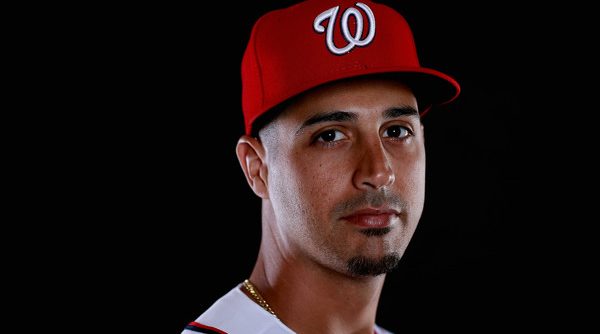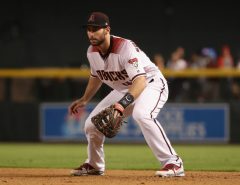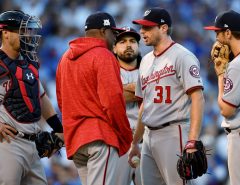Gio Gonzalez had a roller coaster of a 2016 season, and it ended with his worst stats ever as a National. He ended with a 4.57 ERA, by far his worst during his tenure in DC. As a result, Gio found himself on the trade block during the offseason as the Nationals searched for upgrades in the bullpen and at catcher. In the end, Gonzalez stayed put in DC and he will try and turn things around in 2017 as he takes the mound for the first time this season.
In a lot of regards, Gio was the same old Gio in 2016. His strikeout rate hovered in the low 20% range as it has pretty much his whole career. He actually improved his walk rate down to 7.7%, the lowest rate of his career. FIP, a stat driven mostly by strikeout rate and walk rate, thought he a solid year with a 3.76 FIP.
Of course, as discussed yesterday with Tanner Roark, there is more to pitching than strikeouts and walks. For Gio, it was that other stuff that got worse in 2016. Like a lot of pitchers in 2016, Gio had a dinger problem. His home run allowed rate skyrocketed last season, posting easily the highest of his time in DC. Unlike a lot of other pitchers, Gio’s struggles with the long ball are just a symptom of the underlying problem: he gave up hard contact.
Gio, who usually induces a lot of groundballs with his changeup and big, bendy curveball, wasn’t much of a groundball pitcher in 2016. He forced fewer groundballs in 2016 and gave up more line drives. His hard hit rate allowed jumped to 33%, the highest rate of his career. Instead of inducing hitters to pound balls into the turf, Gio served up hard hit balls all over the place. All of those results are symptoms of an underlying problem: decreasing velocity.
Gio’s velocity has been slowly decreasing over the last several years, as it does with most pitchers. It seems that the loss of velocity finally hit a tipping point in 2016 as his fastball velocity on the year dipped to 92 MPH. Some pitchers, like Roark, can survive at 92 MPH in today’s baseball thanks to pin point command and lots of movement. Gio is no control artist, though. His stuff, when it was coming in faster, was hard to square up so Gio never had to worry too much about control. It showed in his approach as walks have always been a problem in Gonzalez’s career. It seems that now, at 92 MPH and lower, that lack of control has come back to bite Gio. Unable to consistently nibble around the edges, Gio finds himself throwing hittable pitches in the zone more often.
There is some reason for hope, though. Gonzalez’s velocity slowly returned as the season wore on. He started the year at 91 MPH and ended at 93 MPH. Plus, Gio had a whole offseason to come up with a new approach at his diminished velocity. That might mean relying more on his still effective curveball and changeup and throwing fewer fastballs. Keep an eye on Gio’s pitch selection and velocity during this season. If he can find a way to limit the hard contact, it’s not hard to imagine Gio bouncing back and bringing that ERA back down under 4.00. If he can’t adjust, it may 2016 all over again.
Tags: 2017 player previews, Gio Gonzalez, Nationals, Nats, Washington Nationals




Leave a Reply